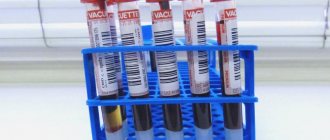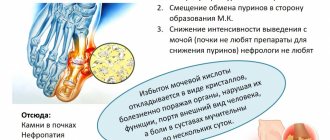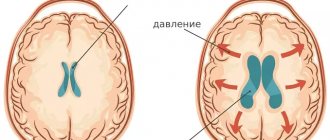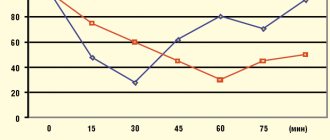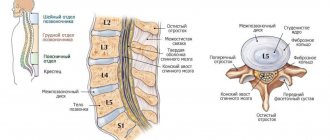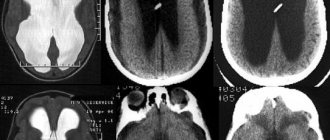Local therapist
Burnatskaya
Svetlana Nikolaevna
33 years of experience
Local therapist, occupational pathologist. Member of the Russian Scientific Medical Society of Therapists
Make an appointment
Agranulocytosis is a severe pathological condition. With it, there is a critical decrease in granulocytes in the blood. Granulocytes are an important fraction of the leukocyte series (neutrophils, eosinophils and basophils). At the same time, the concentration of basophils and eosinophils in the blood in the normal state is a small percentage, so changing their number does not have a significant effect. Thus, it can be argued that it is the decrease in the concentration of neutrophils that leads to the development of blood agranulocytosis. Hence the second name of the pathology – neutropenia.
Experts raise the question of agranulocytosis in a patient when the leukocytes in the blood decrease below 1×109/l and granulocytes below 0.75×109/l. Since leukocytes and granucolites perform a protective function against pathogens, a decrease in their concentration reduces the body’s ability to resist infections and viruses. The development of agranulocytosis is almost always accompanied by the development of various infectious processes, these can be ulcerative stomatitis or tonsillitis, pneumonia, hemorrhagic manifestations, etc.
Depending on the concentration of granulocytes, the severity of peripheral blood pathology is determined. The lower their concentration, the more severe the degree; there are three degrees: mild, moderate and severe. In severe cases, the granulocyte concentration is below 0.4 × 109/l.
In women, agranulocytosis is more common. In men, this disease is diagnosed on average 2-3 times less often. In most cases, the manifestation of pathology occurs after the age of 40 years.
Symptoms and signs
Since the pathology has several forms, the symptoms of agranulocytosis of different types differ. The immune type is characterized by acute agranulocytosis with the following symptoms:
- severe weakness and sweating;
- body temperature up to 39-40°C;
- pallor;
- the appearance of infectious stomatitis;
- inflammation of the pharynx and tonsils;
- inflammation of the gums;
- sore throat and spasm of the chewing muscles.
Myelotoxic and autoimmune types progress gradually and also gradually develop symptoms:
- hemorrhagic symptoms in the form of nosebleeds, bleeding gums, etc.;
- presence of blood in the urine;
- the occurrence of bruises, hematomas;
- abdominal pain and bloating, diarrhea if the intestines are affected;
- possible occurrence of chest pain when breathing.
Causes
The occurrence of agranulocytosis can have different causes, depending on which the pathology is classified.
Types of illness
Myelotoxic agranulocytosis is the result of the influence of various unfavorable factors on the red bone marrow. Under their influence, deep depression occurs in the hematopoietic process responsible for the production of granulocytes. Unfavorable factors should be understood as internal diseases of the body and external adverse effects. Examples of external influences: poisoning with substances and poisons that suppress hematopoiesis (mercury, arsenic, benzene, etc.), radiation exposure, taking myelotoxic drugs. Among the diseases that most often cause agranulocytosis, experts identify acute leukemia, sarcoma and metastasis to the red bone marrow, and chronic myeloid leukemia.
Immune agranulocytosis is characterized by the destruction of granulocytes in the blood due to the occurrence of pathological immune reactions in the body. This type is further divided into the following forms of agranulocytosis.
- Autoimmune - occurs in most cases against the background of connective tissue diseases. These include, for example, rheumatoid arthritis or systemic lupus erythematosus.
- Hapten agranulocytosis or drug-induced agranulocytosis develops with the participation of haptens in immune reactions. Haptens themselves are harmless substances, but under certain situations and reactions they can cause the destruction of granulocytes. The role of haptens most often are drugs that the patient takes as part of the treatment of various diseases. Hence the second name of the pathology – “medicinal”.
- Genuine - this type is assigned to the patient in cases where diagnostics have not revealed the reasons for the decrease in granulocytes in the bloodstream.
What is agranulocytosis
The agranulocytic type of sore throat is one of the manifestations of agranulocytosis, which is quite rare.
Make an appointment right now!
Call us by phone or use the feedback form
Sign up
With agranulocytosis, there is a sharp decrease in the number of granular leukocytes in the blood (up to their complete disappearance). Leukocytes, as we know, are the main defenders of our body from viruses and bacteria that have penetrated it. As soon as the infection enters the body, the immune system receives a signal about the invasion, and increased production of leukocytes begins, which capture the “enemy” and destroy it. Of course, if there are very few white blood cells in the blood, a person becomes much more susceptible to the effects of pathogens.
The manifestation of agranulocytic tonsillitis cannot be considered an independent disease. This is a syndrome that occurs against the background of certain diseases. It is impossible to distinguish this type of tonsillitis from others “by eye”; laboratory tests must be carried out.
Most often, the disease manifests itself in people under the age of forty. Children and young people are diagnosed with this diagnosis quite rarely. It is noteworthy that women suffer from the disease twice as often as men.
The main reason for the development of the disease is the incorrect prescription of antibacterial agents and cytostatics (drugs whose action is aimed at inhibiting and suppressing the process of cell division; most often these drugs are used in the treatment of malignant neoplasms).
Risk factors
The risk group primarily includes patients who are frequently exposed to severe infections, as well as unusual, rare infections. Another risk group is patients who, as part of the treatment of other diseases, receive drugs or therapy (for example, radiation therapy), which can cause the development of agranulocytosis. Patients at risk should be especially attentive to their well-being and pay attention to alarm bells. Accurate laboratory diagnostics are required to confirm the diagnosis.
Causes of agranulocytosis
- Ionizing radiation and radiation therapy, chemicals (benzene), insecticides.
- Drugs can cause agranulocytosis as a result of direct inhibition of hematopoiesis (cytostatics, valproic acid, carbamazepine, beta-lactam antibiotics) or by acting as haptens (gold preparations, antithyroid drugs, etc.).
- Autoimmune diseases (eg, lupus erythematosus, autoimmune thyroiditis).
- Viral infections (caused by Epstein-Barr virus, cytomegalovirus, yellow fever, viral hepatitis) are usually accompanied by moderate neutropenia, but in some cases agranulocytosis may develop.
- Severe generalized infections (both bacterial and viral).
- Emaciation.
- Genetic disorders.
Diagnosis of agranulocytosis in patients
If the patient is at risk or corresponding symptoms appear without other visible causes, agranulocytosis is diagnosed using the following methods.
- A general blood test is the very first and most important test that allows you to determine the concentration of granulocytes and leukocytes in the bloodstream.
- Antibody test - prescribed to identify autoimmune agranulocytosis, allows you to determine antineutrophil antibodies.
- Myelogram - allows you to determine the decrease in myelokaryocytes and other indicators of the condition of peripheral blood.
If necessary, when diagnosing agranulocytosis, other research methods are prescribed to determine the degree of damage to organs and systems caused by this pathology. In particular, the following may be prescribed:
- X-rays of the lungs;
- visiting a dentist;
- blood chemistry;
- blood sterility tests;
- consultation with an otolaryngologist.
Complications
As we can see, this form of tonsillitis is one of the most dangerous. Delayed treatment can lead to irreversible consequences, including death. The most common consequence of agranulocytic tonsillitis is the transition of the inflammatory process to neighboring organs and tissues with the formation of ulcers on them, followed by tissue necrosis. Perforation of the palate is often observed. There is a high probability of developing sepsis, which entails infectious-toxic shock, diseases of the intestines, genitourinary system, liver, lungs, peritonitis, mediastinitis and other pathologies.
To avoid such complications, it is necessary to consult a doctor promptly when the first signs of the disease appear! The sooner treatment begins, the higher the prognosis for recovery, even in severe cases of the disease. When sepsis occurs, the prognosis is, alas, the most unfavorable.
Treatment
Once a diagnosis is made and the type of pathology is verified, treatment should begin immediately. In most cases, the patient requires hospitalization in the hematology department. This is necessary to create aseptic conditions. In the isolation ward, quartz treatment is carried out according to a schedule, and visits to the patient are also limited. Such measures are necessary to prevent the occurrence of additional infectious complications.
The specialist prescribes a comprehensive treatment for agranulocytosis to the patient, and it begins with eliminating the factors under the influence of which the development of this pathological condition began. The set of measures for the treatment of agranulocytosis includes:
- elimination of negative impact factors, including refusal to take myelotoxic drugs, various chemicals, etc.
- treatment and prevention of infectious diseases;
- enhanced oral care;
- steroid therapy;
- administration of immunoglobulin (intravenously);
- leukocyte transfusion;
- plasmapheresis, etc.
The range of therapeutic measures depends on the type of disease, its degree, as well as the degree of other pathologies present in the body. In each case, the treatment complex is prescribed individually.
What you need to know about agranulocytosis
Diseases of the blood and blood-forming organs are quite widespread in the world. Blood cells are divided into red blood cells, white blood cells and platelets. Leukocytes are the main element of the immune system and are heterogeneous in their structure and functions. Morphologically, cells with specific granularity (granulocytes) and cells without it (agranulocytes) are distinguished.
In turn, granulocytes, depending on the color of the inclusions with special staining, are divided into eosinophils, basophils and neutrophils. Typically, neutrophils account for 47 to 70% of all leukocytes. They are the body's main defense against bacteria and fungi. The significant difference in their numbers is due to many factors. On the one hand, these cells have a short life expectancy, on the other hand, too many things affect their numbers: work habits, nervous tension, taking medications, the presence of a bacterial infection. It is with the lack of granulocytes (and primarily neutrophils) that a pathological condition such as agranulocytosis (neutropenia) is associated.
This pathology can extremely rarely be congenital; more often it develops under the influence of external factors. Acquired agranulocytosis can be caused by disorders of the immune system or exposure to toxic substances and other adverse factors on the red bone marrow. Immune damage is characterized by the destruction of leukocytes due to the occurrence of pathological immune reactions in the body, which are associated with external factors and autoimmune processes, such as rheumatoid arthritis or systemic lupus erythematosus. With toxic agranulocytosis, the hematopoietic germ responsible for the production of granulocytes is inhibited. Common causes are poisoning with toxic substances that inhibit hematopoiesis, radioactive radiation, and taking certain medications.
There is a fairly high risk of developing neutropenia during the treatment of cancer, since their therapy widely uses ionizing radiation and cytostatic drugs that have a toxic effect on the red bone marrow.
Immune neutropenia is often associated with the appearance in the body of antibodies to its own leukocytes under the influence of special substances, haptens, which, by binding to proteins, act as antigens. Drugs such as sulfonamides, anti-tuberculosis drugs, non-steroidal anti-inflammatory drugs (aspirin, analgin, amidopyrine) can act as haptens.
Agranulocytosis is accompanied by the development of various diseases of an infectious nature - tonsillitis, ulcerative stomatitis, pneumonia and other pathological conditions. This is caused by significant contamination of the oral cavity with opportunistic microorganisms, which are activated when immunity decreases. The first manifestations are fever, chills, sweating, and deterioration in general health. The occurrence of ulcerative-necrotic sore throats and stomatitis, which are accompanied by sore throat, increased salivation, and difficulty swallowing, is typical. In severe cases, the intestinal mucosa is affected, which is accompanied by bloating, colic, and diarrhea.
If symptoms are severe, it is necessary to hospitalize the patient as soon as possible in a specialized department, where he will be provided with aseptic conditions. This is necessary to prevent the occurrence of infectious complications. Treatment of agranulocytosis involves eliminating the causes that led to this condition - stopping taking myelotoxic drugs. In the presence of infectious lesions and fever, broad-spectrum antibiotics and antifungal drugs are prescribed. Careful hygienic care of the oral cavity and skin is necessary. If the disease is autoimmune, the use of glucocorticoids is indicated. If the white blood cell count is severely low, a white blood cell transfusion may be required. In each case, the treatment complex is prescribed individually by a hematologist.
Yuri Kuzmenkov, doctor, Republican Scientific and Practical Center "Cardiology"
The doctor's areas of interest are therapy, cardiology, endocrinology.
We are waiting for your questions, friends!
